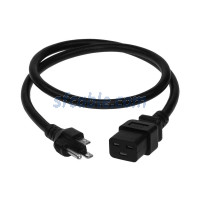International Power Cord Regulations That You Must Know About
When you undertake installation of your devices with power cords, you must have observed in the specification sheet that one part of the cord is approved and another isn’t. This might lead you to wonder as to why is it so? Well, it can be a bit tricky to understand international approvals of cords. Let’s obtain a detailed understanding behind the process of approvals and regulations.
Approvals In Parts
Every power cord that you come across is approved in its parts and not as a whole. Its connector, wire and plug are approved differently. Although the IEC standard connectors are used all over the world, the standards of their approval change from one country to another. This authorization depends on the agency they are being approved by. For eg, in China and Argentina, the whole cord set is approved instead of its parts.
IEC Regulations
The International Electrotechnical Commission (IEC) based in Geneva, is an association that establishes international standards for the electronic, electrical, and other similar technologies. Before IEC standards are established, a consensus is carried out wherein the experts from different countries participate. As mentioned above, the IEC connectors are used all over the world and hence even if the approval agencies are different, they must follow the regulations laid by IEC (International Electrotechnical Commission)
Ratings Based On The Current Capacity

The IEC 60799 5.2.2 states that “The rated current of the plug shall be not less than the rated current of the connector.” It means that the connector shouldn’t have a rating higher than the attached plug. Due to this reason, the international power cords of today have no approval on the IEC-320-C19 side of the cord. For eg, The highest rating a UK plug can have is 13A and if its C19 connector is rated 16A, IEC will not approve the connector as its rating is high. The same applies to countries like Denmark, Switzerland, Australia and Argentina. The plugs available in these countries have ratings lesser than their connector. Looking into their specification sheet, you will see that the power cords will show “NONE” on the C19 column of approval.
Changing International Standards
Different ratings are applicable on different chords in different countries. IEC C13 power cords are given approval by UL (Underwriters Laboratory) upto 15A in North America. But if you carry IEC C13 to Europe, it won’t be an approved standard because it is only approved till 10A. Same holds true for IEC C19 power cords. It is approved up to 20A in North America and if you take it to other countries, it wouldn’t be considered an approved standard.
The standards set by IEC (International Electrotechnical Commission) and UL (Underwriters Laboratories Inc.) differ notably. IEC standards state the minimum safety requirement for a device, whereas, UL specifies the technical details pertaining to application and product safety. We hope that this gives you a little understanding about the standards set for power cords. Keep reading this blog for more!
Source : https://www.sfcable.com/blog/international-power-cord-regulations-must-know/




Comments
Post a Comment